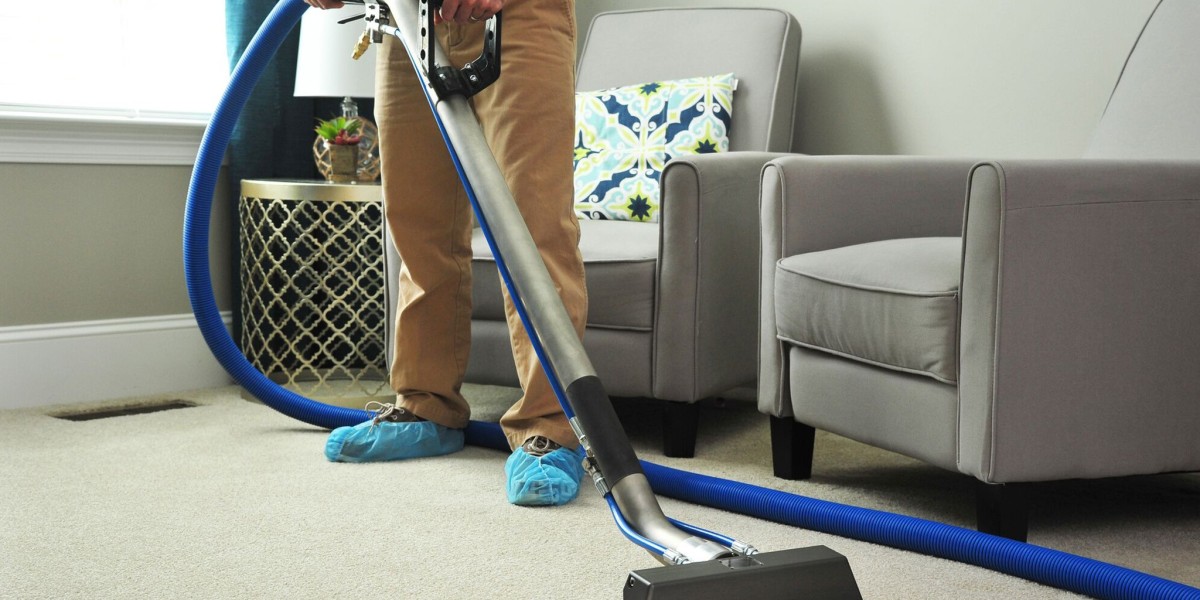
HELOCs and home equity loans permit property owners to use their home equity to access cash.
- HELOCs are revolving credit lines allowing as-needed borrowing, while home equity loans are lump-sum loans.
- Depending on your monetary objectives, either option might be a good fit for you. It's easy to request a HELOC or home equity loan online.
Home equity lines of credit (HELOCs) and home equity loans are similar because they both provide methods to turn your home equity into money. However, these 2 financial tools are not the very same.
In this article, you will get answers to your a lot of pushing HELOC-vs-home-equity-loan questions, including:

- What is home equity, and how do I access the money worth?
- Why would someone borrow against their equity, and is it a great idea?
- How are HELOCs and home equity loans similar?
- What is the difference in between a home equity loan and a HELOC?
- How can I choose between a HELOC vs. a home equity loan?
What Is Home Equity and How Is It Used?
Home equity is the distinction between the present market worth of your home and just how much you owe in mortgage debt on the home. This is the share of the home's value that you own, instead of the share of the worth funded by the lending institution.
For example, if your home is presently worth $400,000 and your principal mortgage balance is $100,000, you have $300,000 in home equity.
As a property owner, you can access a part of this equity by borrowing against it through either a HELOC or a home equity loan.
Common Reasons To Borrow Against Your Equity
Before we talk about the resemblances and differences between a home equity loan and a line of credit, here is a list of reasons why homeowners might select to borrow against their home equity:
- To cover an unforeseen cost (like cars and truck repairs or emergency medical bills, for instance).
- To finance home restorations or repair work.
- To maximize capital for the deposit on a financial investment residential or commercial property.
- To consolidate existing debts.
- To spend for college.
- To begin a service.
- To purchase a 2nd home or vacation residential or commercial property.
Whatever your reason, a HELOC or home equity loan can help transform some of your home equity into money.
Two Ways To Utilize Your Equity: The HELOC and the Home Equity Loan
HELOCs and home equity loans both enable you to borrow against your home equity. They are similar in numerous methods, however they work in a different way in practice.
What HELOCs and Home Equity Loans Share
HELOCs and home equity loans share the following attributes.
Both Are Secured By Using Your Home as Collateral
It is essential to comprehend that your house is used as security when obtaining against home equity. This means that failure to pay back the loan might potentially result in a foreclosure by the loan provider. [1]
So, before deciding to borrow versus your home equity, you ought to thoroughly weigh the need for the cash and your capability to repay the loan.

Both Require an Appraisal of Your Home
Since your home secures the loan, lending institutions require to confirm the value of your home before issuing a HELOC or home equity loan. This is done through a formal evaluation, most commonly called an appraisal, which is finished by a licensed home appraiser.
The appraisal process includes looking into current sales of similar residential or commercial properties to estimate the present worth of a home. In some cases, an appraiser might need a fast trip of the subject residential or commercial property to assess the existing condition or confirm upgrades that can enhance the residential or commercial property's worth. However, with a lot information offered online, such as the square video footage, year developed, and allows granted, assessments can typically be completed virtually without an in-person evaluation.
The appraised worth of the home might influence the loan quantity. This is due to the fact that lenders have requirements connecting to just how much equity the homeowner must keep in the residential or commercial property, and the assessed worth straight impacts home equity computations.
Both Included Closing Costs
New loans and credit lines often come with closing costs. These costs include different fees and expenditures, consisting of:
- Application fees,
- Appraisal costs,
- Loan origination charges,
- Document preparation costs,
- Title fees,
- Attorney charges, and
- Recording expenses.
Closing costs can differ commonly from one loan to the next due to a number of elements, including area, loan type, and loan quantity.
It's crucial to note that you may not require to pay these closing costs out of pocket. It might be possible to roll these costs into the loan and repay them gradually as part of your routine HELOC or home equity loan payments.

What Is the Difference Between a HELOC and a Home Equity Loan?
The main distinction in between a home equity loan and a home equity credit line is how loan earnings are accessed. With a home equity loan, you receive the amount borrowed (minus any costs and costs) in a single lump amount with a fixed repayment schedule.
But with a HELOC, you are approved a line of credit that you can access as needed. Much the very same as using a credit card, qualified borrowers are authorized for an optimum credit line and can prepare to the established limit. Borrowers pay back the amount made use of a month-to-month basis, as detailed by the terms of their HELOC contract. Monthly payments will vary based on the outstanding principal balance and the relevant Interest rate (APR). [2]
Another important distinction between a home equity loan vs. a credit line is the rate of interest. Home equity loans usually use flat (set) rate of interest, indicating the rate is locked in for the regard to the loan. HELOCS, on the other hand, generally provide adjustable interest rates that vary with altering market conditions. However, PNC Bank offers a Fixed-Rate HELOC for those who choose the flexibility of a HELOC with the stability of a set rate of interest.
What Are the Benefits and drawbacks of a HELOC?
There are numerous benefits and drawbacks of using your home equity for a line of credit. [3]
Advantages of a HELOC:
- You can borrow small increments as required. This flexible system can assist you obtain only what you require and keep month-to-month payments manageable.
- HELOCs generally come with lower interest rates and greater loan limitations than credit cards.
- You might have the ability to get an interest-only (IO) HELOC. With an IO HELOC, only interest is due throughout the "draw period" (the designated time that you can access your equity).
- You might not need to start repaying the balance up until the draw period closes and a repayment duration starts. This can indicate low monthly payments throughout the draw period, but it likewise suggests greater payments throughout the payment period.
- Making on-time payments can boost your credit score in time.
Potential drawbacks of a HELOC:
- HELOCs typically have variable rates of interest. If market rates increase, your regular monthly payment can increase.
- HELOC interest is no longer instantly tax-deductible as it was before 2017. Tax laws presently permit you to deduct only the part of the loan that is utilized to finance home enhancements.
- Failure to repay a HELOC can possibly result in foreclosure of the home.
- In addition to the closing costs for developing the line of credit, there may be continuous charges to maintain the credit limit
What Are the Benefits and drawbacks of a Home Equity Loan?
Here are the benefits and drawbacks of home equity loans. [4]
Pros of a home equity loan:
- Home equity loans usually come with a fixed rates of interest, which permits a foreseeable monthly payment.
- You get a swelling amount that can be invested or invested as you choose.
- There are no continuous account maintenance charges or annual charges.
- You will not have an open line of credit to motivate unnecessary spending.
Potential disadvantages of a home equity loan:
- Borrowing excessive might result in unneeded interest costs, and borrowing too little could need using for another loan.
- Failure to repay the loan can possibly lead to foreclosure of the home.
- There might be fees for originating the loan, plus other closing costs. Costs for a home equity loan may be greater than the costs of opening a HELOC
How To Decide Which Is Best for You
HELOC Advantages And Disadvantages
Pros Cons
Borrow small increments as required.
Often have variable rates of interest.
Lower rate of interest and higher loan limitations than charge card. Interest is no longer instantly tax-deductible.
On-time payments can improve your credit report in time. Failure to repay can possibly lead to home foreclosures.
Home Equity Loan Benefits And Drawbacks
Pros Cons
Fixed rate of interest for predictable payments.
Could possibly borrow excessive or insufficient.
Lump-sum quantity. May cost more than opening a HELOC.
No on-going account maintenance charges or annual charges. Failure to pay back can possibly result in home foreclosure.
HELOCs may be a good option for house owners who: [5]
- Are unsure how much cash they will need to borrow.
- Don't require cash now but want an open line of credit for emergency situations.
- Want and able to budget for variable interest rates and altering balances.
Home equity loans might be an excellent alternative for house owners who: [5]
- Know precisely just how much cash they require.
- Prefer the stability of repaired rates and a scheduled repayment strategy.
How To Obtain a HELOC or Home Equity Loan
Once you decide which is the much better fit for you, a HELOC or a home equity loan, you can begin the application process. Here are the five actions to applying for a HELOC or home equity loan.
Step 1. Review Lender Requirements
Your lender wishes to make certain that you are economically able to handle additional financial obligation. Lenders also check to see if you have enough equity in the home to borrow against. Most lenders require that house owners retain at least 15-20% equity in their homes. [6]
Step 2. Gather Your Documents
To request a loan versus your home equity, you may need the following: [7]
- Government-issued proof of identification (a chauffeur's license, state ID, or passport).
- Proof of earnings (pay stubs, W2s, and/or earnings tax returns, as suitable, plus proof of any retirement or additional earnings).
- Financial details about your residential or commercial property costs (mortgage statements, insurance declarations, and residential or commercial property tax bills, as relevant).
Step 3. Complete the Application
The loan application will provide the lending institution with the details required to determine if a loan can be offered and in what quantity. You can finish the loan application online rapidly and quickly with PNC Bank.

Step 4. Have Your Home Appraised
The appraisal figures out the residential or commercial property's existing worth, influencing the possible loan quantity. In most cases, a full on-site appraisal is unnecessary. Instead, the appraiser can collect info about the residential or commercial property online, together with information of equivalent homes that have just recently offered.

Step 5. Arrange the Closing Costs and Access Your Funds
The closing expenses for the loan can either be paid in advance or rolled into the expense of the loan. When paid upfront, you prevent interest charges on the amount of the closing costs. However, lots of borrowers want to pay the interest to prevent paying the fees upfront expense.
Use Your Home Equity To Access Cash When You Need It
Building equity is one of the biggest benefits of homeownership. If you're all set to transform a few of your equity into cash (or you simply wish to have an open credit line for emergencies), you can make an application for a HELOC online with PNC Bank today.










